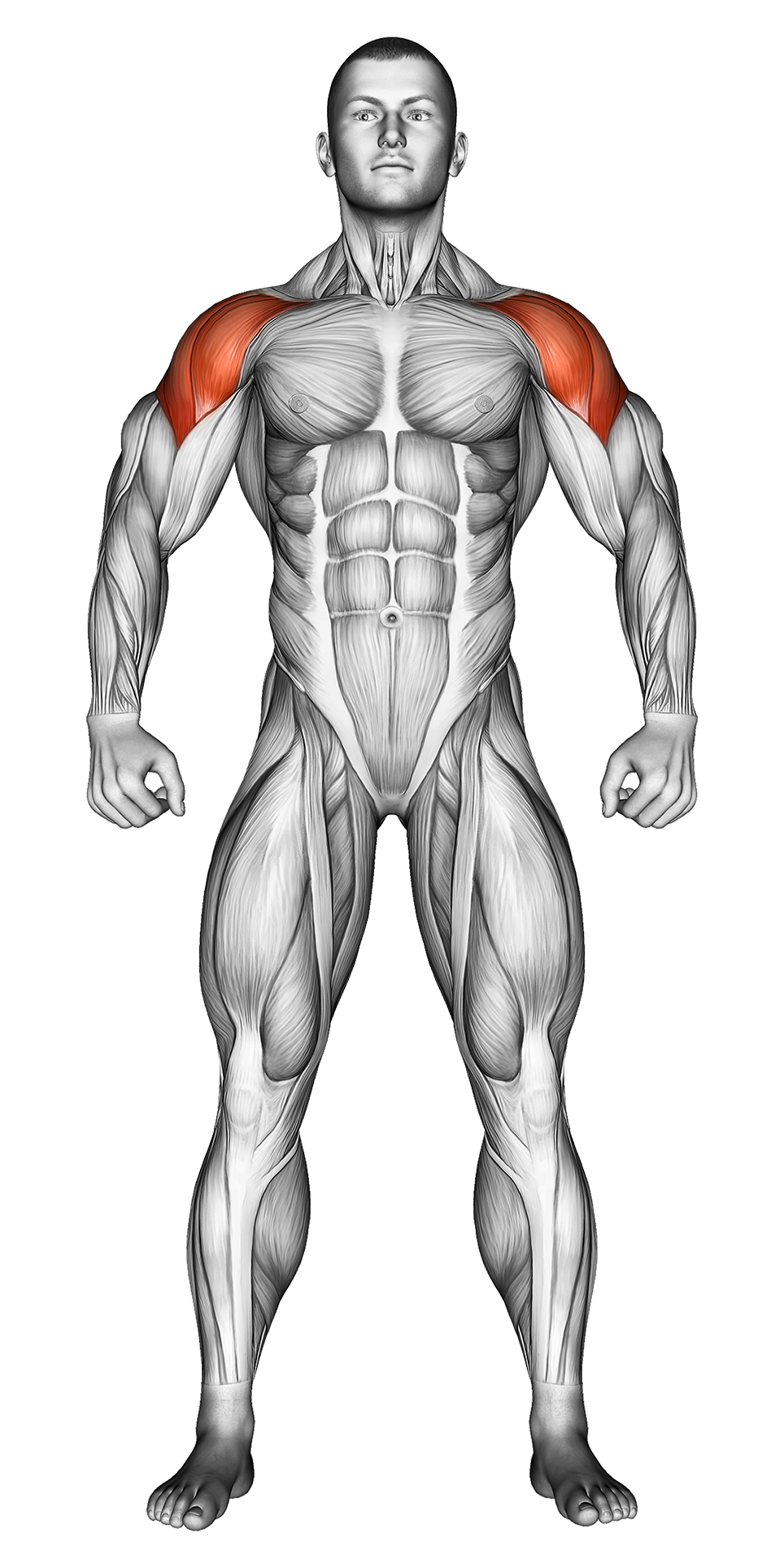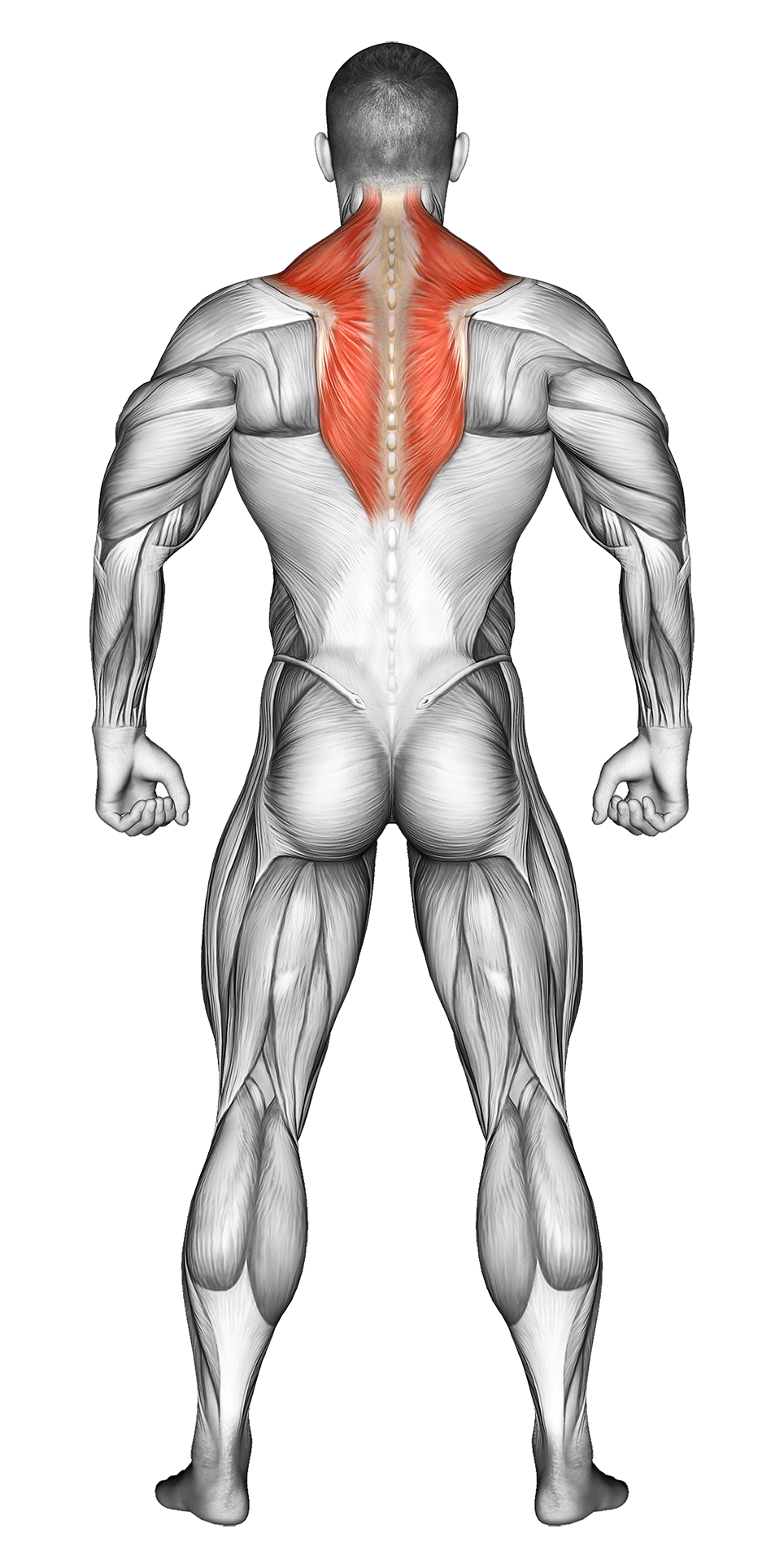Cable Face Pull: Video Tutorial & Exercise Guide
| Workout | Cable Face Pull |
| Primary Muscle Group | Shoulders |
| Secondary Muscle Group | Traps |
| Equipment Required | Cable |
| Force Type | Pull |
| Mechanics | Isolation |
| Exercise Type | Strength |
| Difficulty | Intermediate |
Cable Face Pull: Video Tutorial & Exercise Guide
Secondary Muscles
How to do the Cable Face Pull – Step-by-Step Guide
- Step 1: Attach a rope handle to a cable machine at upper chest or eye level. Stand facing the machine and grab the ends of the rope with both hands using an overhand grip, with your palms facing downward.
- Step 2: Step back slightly so that the cable is taut. Stand with your feet shoulder-width apart, engage your core, and keep your chest up. Your arms should be extended in front of you.
- Step 3: Pull the rope toward your face, separating your hands as you pull. Lead the movement with your elbows, keeping them high and flaring out to the sides. Focus on squeezing your rear delts and upper back muscles at the end of the movement.
- Step 4: Pause briefly when your hands reach the sides of your face, with your elbows bent at a 90-degree angle.
- Step 5: Slowly return the rope to the starting position, keeping the tension in your shoulders and back. Repeat for the desired number of reps.
Cable Face Pull Overview
The Cable Face Pull is an excellent upper back and shoulder exercise that targets the rear deltoids, traps, and rhomboids. This pulling motion also engages the rotator cuff muscles, making it ideal for improving shoulder stability and posture. It is commonly used to build strength in the upper back and shoulders, helping to balance out the muscle development that often comes with pushing exercises.
Suitable for all fitness levels, the Cable Face Pull can be modified by adjusting the weight and the height of the cable. It is often included in shoulder, upper back, or full-body routines to improve posture and overall shoulder health.
Benefits of Cable Face Pulls
Cable Face Pulls are highly effective for building strength in the rear deltoids and upper back muscles. This exercise also helps improve shoulder stability by strengthening the smaller rotator cuff muscles, which are essential for injury prevention and overall shoulder health.
Additionally, Cable Face Pulls are great for improving posture, especially for individuals who spend a lot of time seated or doing pushing movements like bench presses. They help balance out the front-to-back shoulder strength, which is crucial for maintaining healthy shoulders.
Cable Face Pull: Pro Tips & Advanced Techniques
Focus on leading the movement with your elbows, keeping them high and flared out to fully engage your rear delts and upper back muscles. Avoid using momentum or swinging the weight; instead, focus on controlled movements. To increase the intensity, try holding the contraction for a second or two at the top of the movement before slowly releasing. You can also perform the exercise seated for greater isolation of the upper back and shoulder muscles.
Progression Plan for Cable Face Pulls
| Level | Sets | Reps | Weight Progression |
|---|---|---|---|
| Beginner | 2-3 | 10-12 | Start with lighter weights, focusing on proper form and control. Focus on squeezing the shoulder blades at the top of each rep. |
| Intermediate | 3-4 | 12-15 | Increase the weight slightly while maintaining control throughout the movement. Focus on pulling the rope all the way to your face. |
| Advanced | 4-5 | 15-20 | Use heavier weights, add a pause at the top of the movement, and slow down the lowering phase to increase time under tension. |
Frequently Asked Questions (FAQs) of Cable Face Pull
What muscles do Cable Face Pulls target?
Cable Face Pulls primarily target the rear deltoids, traps, and rhomboids. They also engage the rotator cuff muscles, helping to improve shoulder stability.
Are Cable Face Pulls suitable for beginners?
Yes, Cable Face Pulls are suitable for beginners. Start with lighter weights to focus on mastering the form, then gradually increase the resistance as you progress.
How often should I perform Cable Face Pulls?
Include Cable Face Pulls in your shoulder or upper back workout 1-2 times per week, allowing time for recovery between sessions.
What common mistakes should I avoid?
Avoid using momentum or swinging the weight. Focus on controlled movements, leading with your elbows, and squeezing your shoulder blades together at the top of the movement.
Can I make Cable Face Pulls more challenging?
Yes, you can increase the weight, add a pause at the top of the movement, or slow down the lowering phase to increase time under tension and muscle activation.
Share

